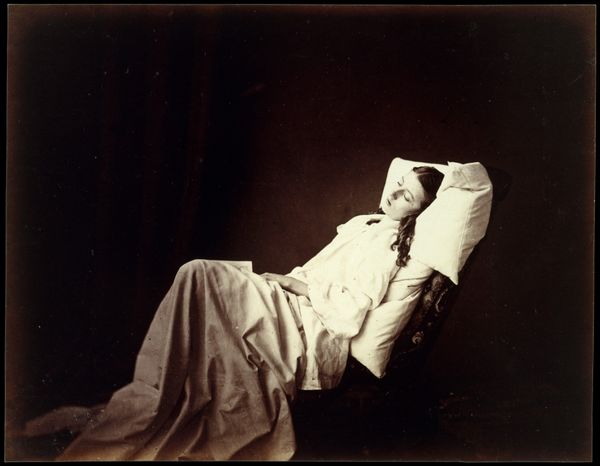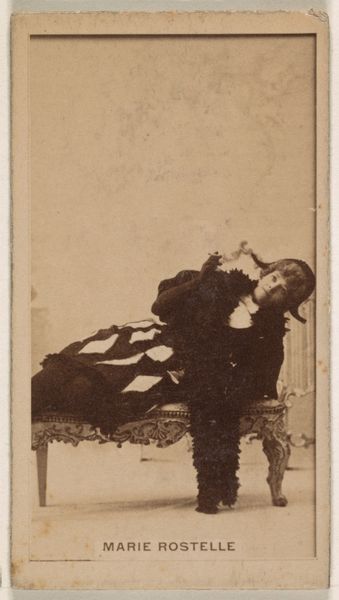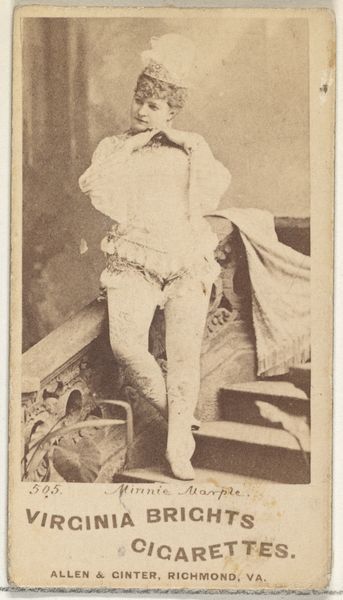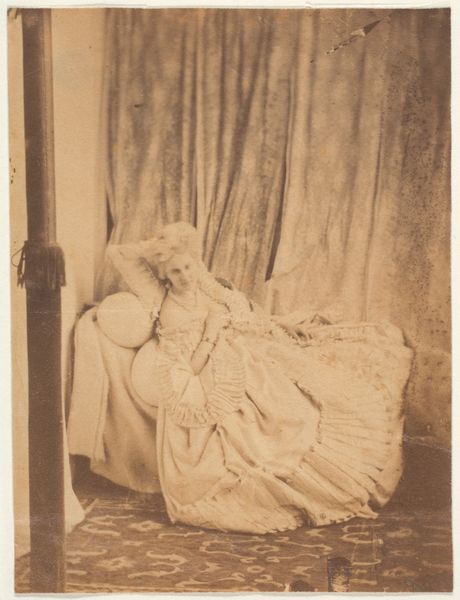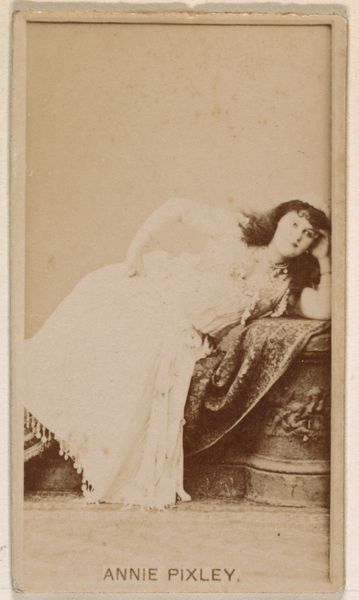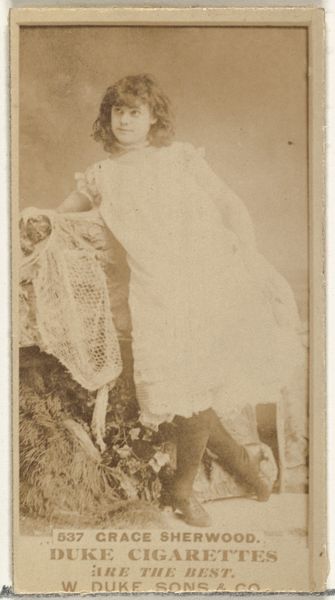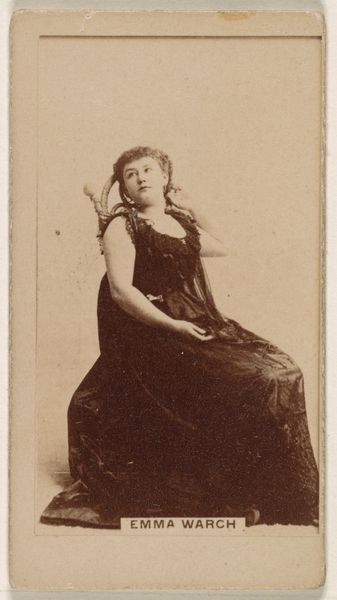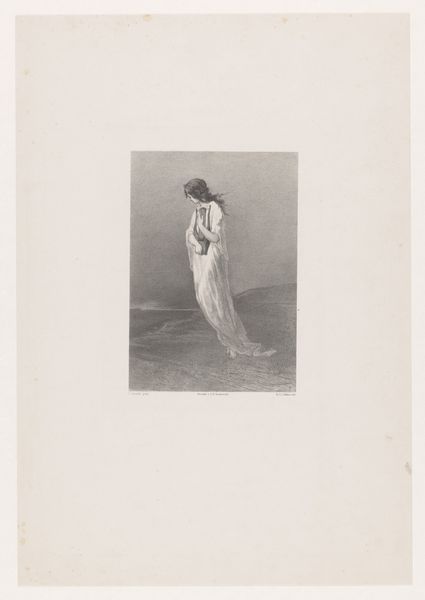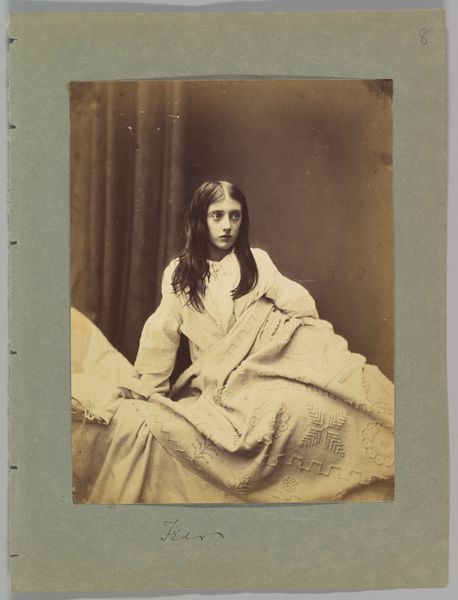
Copyright: Public domain
Curator: Felix Nadar's "Seated Model, Partially Draped," a daguerreotype from 1859. It's remarkable, really, for its quiet intimacy. Editor: There's a weariness about her, a delicate slump of the shoulders. The draped fabric looks heavy, almost like she's drowning in it, yet there's a compelling stillness. Curator: The drape almost looks like plaster to me. This would be about two decades after photography's official public announcement. Remember how long the exposure times were then? She's really inhabiting that still space. Editor: Yes, exactly, that tension of time is crucial. It pushes against the pretense of classical nudes we were seeing. And there is that subtle awareness of the labor in crafting the drapery and even posing for what may have been several minutes in Nadar's studio. Curator: I feel the romantic influence, that dreamy almost melancholy sentiment that's softened by her intense stare. Is she resigned? defiant? And what must it have been like for a woman, a model, to sit for Nadar like that? It evokes that idea of muse-like object. Editor: Perhaps we shouldn't overlook how calculated her pose may have been to conform to what a successful artwork should portray. Those choices involved very real transactions. Curator: But there’s also something eternal about the image. Like all daguerreotypes, it exists as a one-of-a-kind object in the world, each holding unique marks of time on its surface. It exists now only for us in this single format. Editor: Thinking about process, daguerreotypes relied on highly toxic mercury fumes to develop the image. This wasn’t some harmless, quick snap; it was chemical labor, physically demanding for both photographer and sitter. Curator: In the end, it remains a beautiful meditation on light and shadow, an encounter between artist and subject that leaves us wondering. Editor: I'm drawn to how photography was still a nascent industry; where it lacked mass production appeal. It gives us pause to reflect on how images are now churned out, viewed, and easily forgotten.
Comments
No comments
Be the first to comment and join the conversation on the ultimate creative platform.
